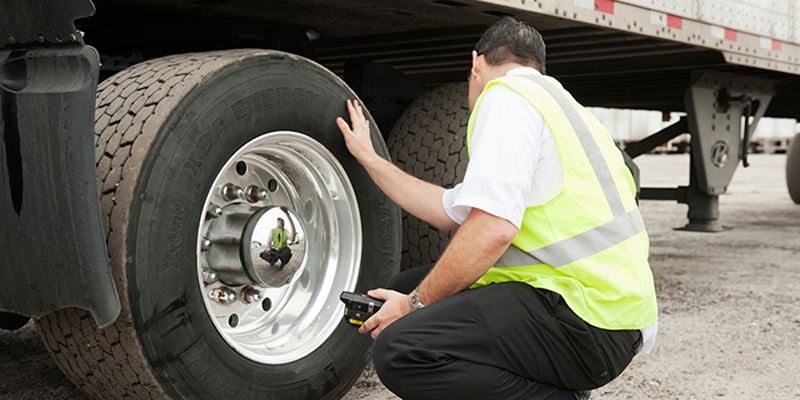Tires support driver safety and loads alike, but Yves Thibert knows that extending the life of these assets involves a look at more than treads alone.
The former mechanic has for the last 20 years been teaching heavy vehicle maintenance at École des métiers de l’équipement motorisé de Montréal. And he offers these seven steps that mechanics can follow to keep tires in service as long as possible.
1. Check several factors when the truck arrives for a wheel alignment
Aligned wheels are protected from irregular wear. When the equipment arrives in a shop for an alignment, Thibert stresses the need to: check the tire pressure on each wheel; inspect every tread for abnormal wear; and also check the condition of the suspension, steering system, and wheel bearings.
2. Inspect the full steering system
A tire will follow the path that it’s given, whether it’s pointing toward a ditch or down the middle of the road. If not aligned with the frame rails, the added resistance will generate unwanted heat and cause the tire to degrade more quickly. Signs of such trouble will come in the form of ear-shaped notches on one side of the tire.
Every component used to steer the truck – including the power steering system, steering column, and pivot pins – needs to be in good condition to keep tires on a straight path.
Thibert recommends conducting such inspections every three or four months to prevent problems.
3. Watch out for bad vibrations
If drivers feel an unusual vibration under their feet, there is a good chance the suspension height needs to be readjusted, Thibert says. Such vibrations are more than a matter of discomfort. They also travel through components, ultimately damaging wheel bearings. As those bearings begin to loosen the wheel will begin to shift from side to side.
4. Look out for leaking shocks
Shocks are designed to keep wheels on the ground as the truck negotiates bumps in the road. But once the shocks begin to leak oil, the added resistance will make it more difficult for the components to effectively stretch and stabilize the load. Eventually, the axles will begin to move in a jerky motion, leaving the tires to bounce. Signs of this problem can emerge in the form of loonie- and toonie-sized indents in the treads.
5. Watch the end play on wheel bearings
The bearings inside and outside the wheel are designed to reduce friction, and good wheel bearings normally have less than five thousandths of an inch of axial play. Anything above this limit can cause the wheel to wobble, affecting tread life, Thibert says.
He says mechanics should also consult manufacturer specifications before making any adjustments, but drivers have a role to play in the inspections as well – monitoring the oil that can be viewed through a window in the hub cap.
A grayish liquid is likely contaminated, and if left unchanged it can damage the bearings and lead to the excessive end play and accelerated tire wear, Thibert says. If it’s the color of maple syrup, all is well.
6. Consider the loads as well as pressure
Maximum tire pressures like 100 psi are established for loaded equipment, but that pressure should be reduced if the truck always tends to be lightly loaded, Thibert says. If the pressures are not reduced, a trailer will have a harder time remaining stable on the road, and the shocks won’t be able to stabilize the truck.
If the equipment is loaded beyond capacity, however, the tires will overheat on both sides of the trailer – just like the situation that will occur if a fifth wheel is positioned a little too far forward.
7. Lower the speeds
Over-the-road tire treads will tend to overheat and degrade when exposed to speeds of 115 km/h or more – well above the 105 km/h thresholds set for the speed limiters required in Ontario and Québec, Thibert says. Higher speeds also lead to the harsh braking that can cause tire treads to chip.
Source: www.trucknews.com





